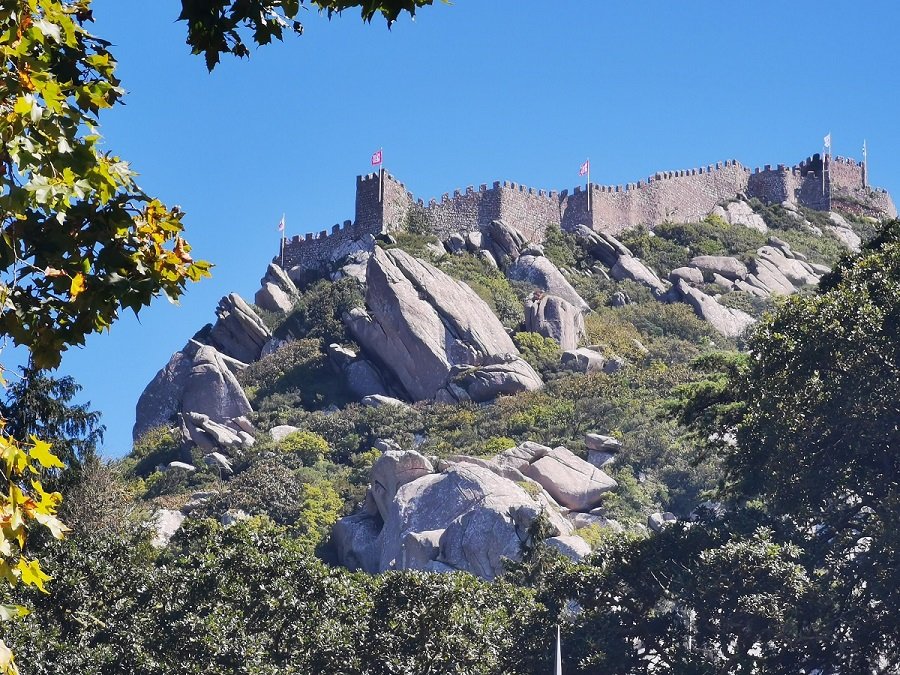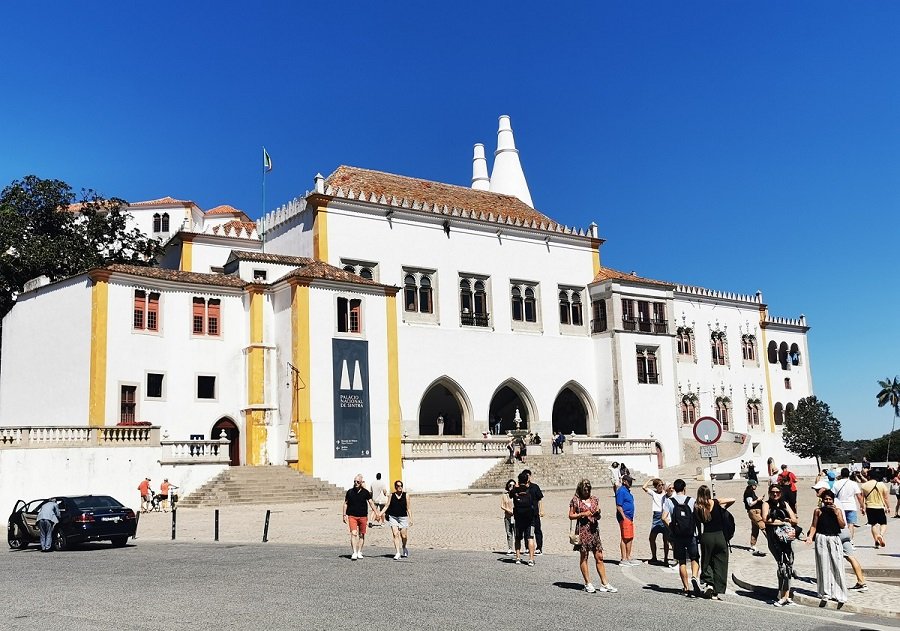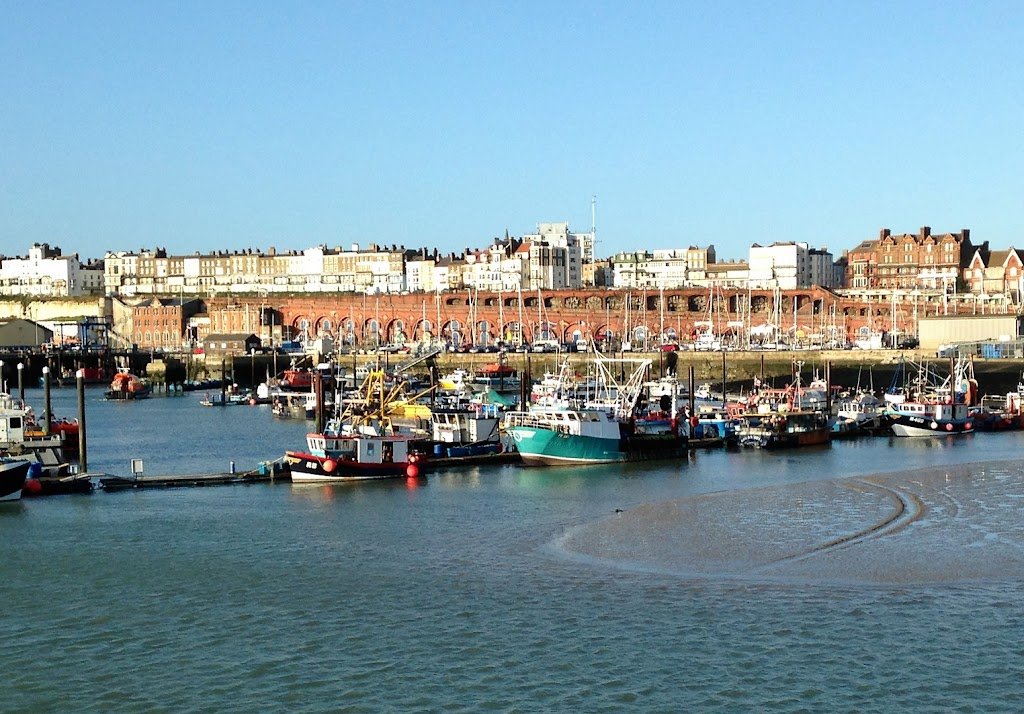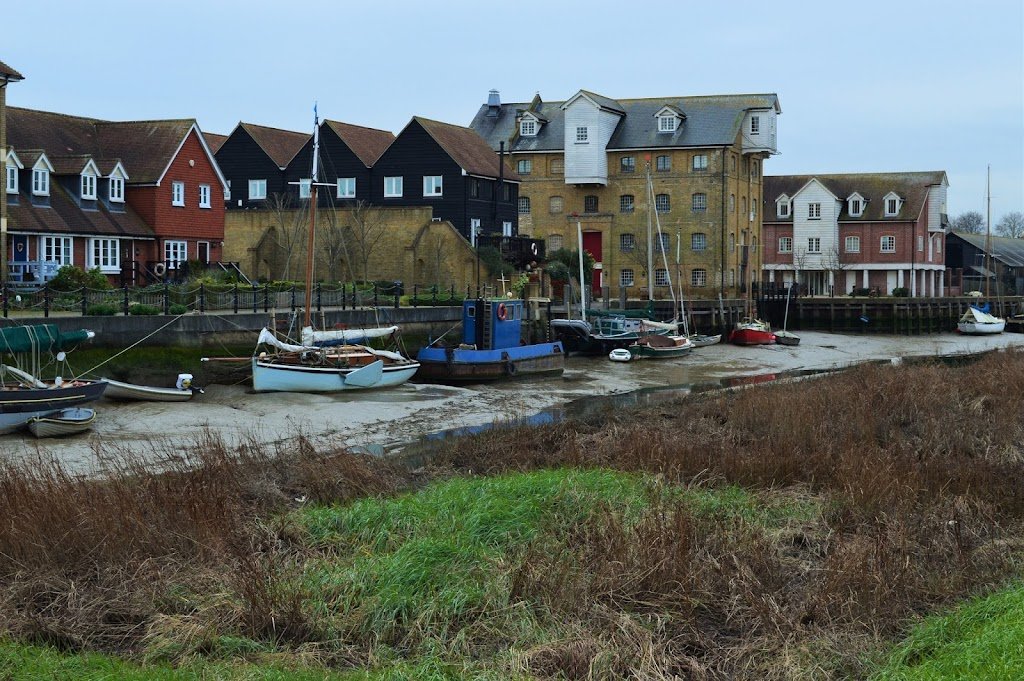During a visit to Sintra in 1809, Lord Byron fell so deeply in love with the beautiful town that he referred to it as “glorious Eden” in Childe Harold’s Pilgrimage:
Poor, paltry slaves! yet born midst noblest scenes—
Why, Nature, waste thy wonders on such men?
Lo! Cintra's glorious Eden intervenes
In variegated maze of mount and glen.
Ah me! what hand can pencil guide, or pen,
To follow half on which the eye dilates
Through views more dazzling unto mortal ken
Than those whereof such things the bard relates,
Who to the awe-struck world unlocked Elysium's gates?
It’s easy to see why. The day we visited, the stunning azure sky served as a backdrop for the brightly colored town buildings and the castles perched high above the surrounding hills.

Sintra: A Brief History
Humans have lived in the rugged hills of the Sintra region since at least the Paleloithic era. Archaeological digs have found pieces of pottery and evidence of settlements dating back to the 5th millennium BCE. Occupied by the Romans, and then the Moors, Sintra was conquered by Christians in the 9th century. For the next two hundred years or so, it passed back and forth between Moorish and Portuguese hands until eventually, in 1147, it came under permanent Portuguese control. In 1154, Dom Afonso I signed the charter to establish the town of Sintra.
The town covered a massive area that included a number of parishes, convents, and monasteries. The National Palace of Sintra was completed during this time. Long considered part of the Queen’s estates, the palace served as the summer home for the Portuguese royal family until late in the 17th century.

By 1800, Sintra was known mainly for its convents and the dark forests that surrounded its castles. It became a place of mystery. And it was probably that romantic and mysterious reputation that attracted Lord Byron and many others. In the decades following Byron’s visit, many wealthy aristocrats moved to Sintra. The palaces and estates they built made it a center of the Romanticism movement. Pena Palace with its striking red and yellow architecture was built during this period as the new summer home for the royal family.
A UNESCO World Heritage Site
In 1995, Sintra was designated a UNESCO World Heritage Site in recognition of its role as “the first centre of European Romantic architecture where this new sensitivity was displayed in the use of Gothic, Egyptian, Moorish and Renaissance elements.” The designation also recognizes the role of the natural landscape in this Romantic environment.
Even though magnificent royal residences in the Romantic style are often to be found in 19th and 20th century Europe, Sintra is a pioneer work of European romanticism, bringing together its incredible botanical richness and a diversity of monuments and buildings from a long period of history.
UNESCO WOrld heritage convention

Visiting Sintra
Today Sintra is a popular tourist destination. More than 3 million visitors flock to see the town’s parks and monuments. Its proximity to Lisbon (it is just 40 minutes by train) adds to its popularity with tourists.
Its popularity has its benefits and drawbacks for residents and visitors alike. We saw a number of signs posted emphasizing that while the locals welcome tourists, they also struggle with traffic congestion and parking.
But once you are in Sintra, there is plenty to see and do. Multiple palaces and castles, plus a charming downtown area to browse, eat, and shop. Do be aware, though, that things are spread out and it is hilly. Be prepared for a lengthy walk to each castle or take a tuk-tuk.
Among the many highlights worth visiting:
- The Castle of the Moors. Dating to the 10th century, this former Islamic fortress offers magnificent views across Sintra. There are also some fascinating archaeological finds throughout the grounds. Buy tickets online before you go to get a discount and avoid the queues.
- The National Palace of Sintra. You can’t miss this as it is right in the center of Sintra. You’ll also spot it from afar by its two conical kitchen chimneys. There is no fee to wander the gardens. To see the stunning rooms of the palace, buy a ticket online if possible to avoid queues and get that wonderful discount.
- Pena Palace. Probably the most eye-catching of all the Sintra palaces (which is saying something), this multicolored palace stands like a fairytale castle high in the hills. Because this is so popular, tickets are on a timed-entry. If you are late, you are out of luck. So buy at least three days in advance and be there when you are supposed to.
- Convent of the Capuchos. A stark contrast to the luxury of the palaces, what this simple convent lacks in elaborate decor, it makes up for in setting. The surrounding trees and boulders are the convent’s “divine construction”. If you’ve read so far, you know the drill – buy before you go.
- The National Palace of Queluz. Another palace, I hear you say. Queluz provides a beautiful dose of 1th and 18th century Rococo and NeoClassical styles. It’s been a National Monument since 1910 and houses the Portuguese School of Equestrian Art.
- Montserrate. Byron is among the many writers and artists who have visited and stayed at Monsterrate over the years. The site was first used as a religious hermitage in the 1500s. Later owners expanded it and made it into something far more glamorous. Don’t miss the ceiling of the octagonal main hall.
Day Trip?
Prior to our visit, we had read a number of articles highlighting Sintra as the perfect spot for a day trip. Since we were staying in Cascais and had a rental car, we decided to drive there. A search online assured us that parking was plentiful near the train station as long as we got there early in the day.
In fact, parking around the station and on the streets is very limited. We were finally able to find a parking spot on the street but it was metered for a maximum of four hours. We wandered for a bit, and then decided that the best way we could see as much as possible in our remaining time was to take a 2-hour tuk-tuk tour. Given the time limitations, it was well worth the price. Our guide took us to lots of key landmarks and lookout points, telling us history along the way and finding the best picture spots.
We had a great day and were able to see a lot BUT it was very much a stop, snap, and dash kind of trip. Given that the castles and palaces each need some time, I would suggest making Sintra a day trip only if you have no alternative. Otherwise, I would recommend staying for at least a couple of days to fully immerse yourself in the history and architecture.



2 thoughts on “Sintra: What to Know Before You Visit”